hankyoreh
Links to other country sites 다른 나라 사이트 링크
[Travel] Naksan Temple offers moment of healing through meditation, sights of forest, ocean
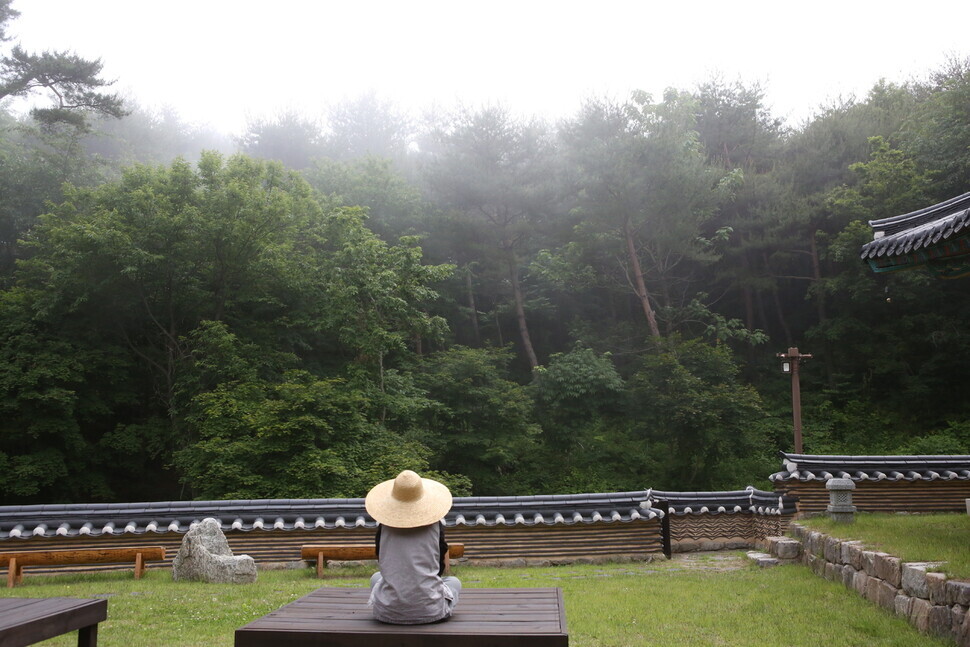
Life goes by so busily and quickly that we sometimes lose ourselves. We miss the chance to tend to our bruised and weary hearts.
What’s needed at such times is a little rest and a little tranquility — which is especially rare in the pandemic. That’s why the spotlight is shining on the “temple stay” as an opportunity for some self-care.
A stay at a Buddhist temple serves as a time for introspection through rest and meditation at a remote temple, far from our worldly routines.
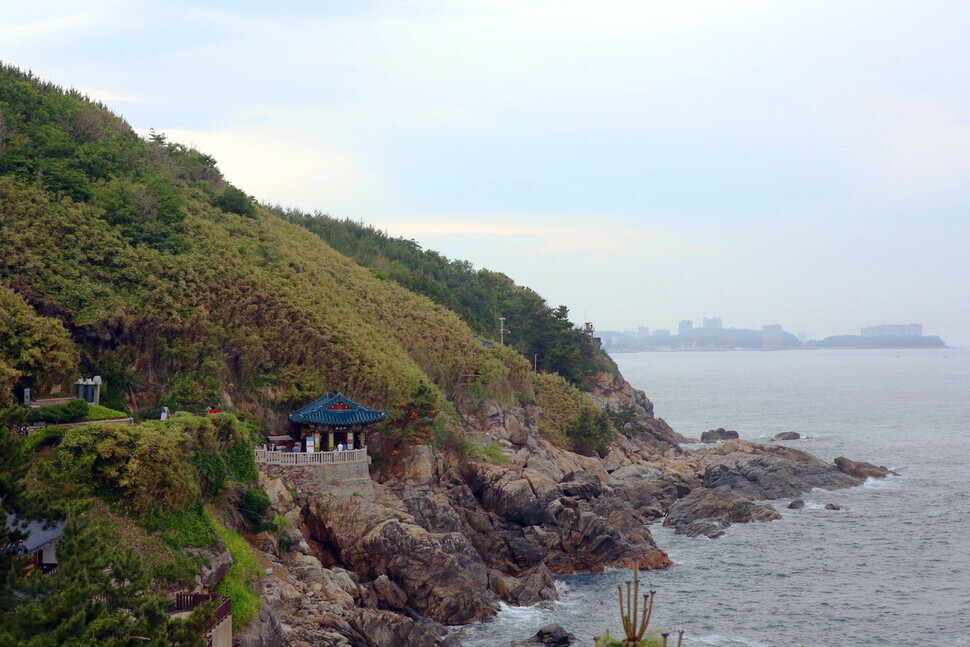
On June 1, I headed to Naksan Temple, in Yangyang, Gangwon Province, searching for some true relaxation. I’ve arranged to do a temple stay there.
A spreading pine tree stands at the path leading to Naksan Temple’s front gate. I can smell the fresh scent of the grass and the pine needles.
As I walk through the welcoming greenery, I see a sign for an exhibition on the Naksan Temple fire. Built around 1,340 years ago by the great monk Uisang, the temple lost most of its buildings to a large forest fire in April 2005. The exhibition features some of the structures and bells melted in the fire, recording this painful incident in the temple’s history.
After looking through the exhibition, I continue walking until I reach an arched gate consisting of 26 granite stones. The gate was assembled during the Joseon Dynasty by workers from 26 villages in the province. The pavilion on top only dates back to 2007, replacing the original pavilion, built in 1963 and consumed in the fire in 2005.
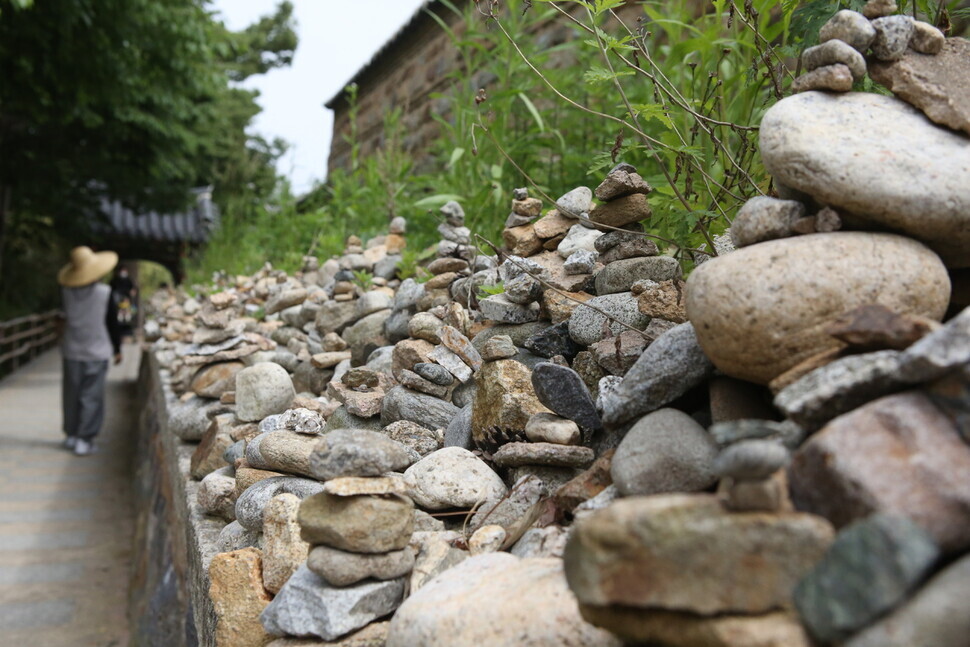
Passing through the gate, I come to a building on the right that houses participants in the temple stay. This dormitory is where they eat, shower, and sleep.
Because of COVID-19, Naksan Temple is only running a relaxation-oriented temple stay, which costs 40,000 won (US$34.90) per night.
After 2 pm, the nine people who’ve signed up for the temple stay meet up. We’re given our room assignments and change into our temple stay clothing.
In our initial orientation, we’re asked to turn over our mobile phones. This is part of the temple’s “digital detox,” a necessary treatment for those of us who are typically tethered to our digital devices. We’re supposed to use our time at the temple purely to find ourselves.
I’m taken on a tour of the grounds by Mun Hye-yeong, a staffer in charge of the Korean temple stay program. Starting with the arched gate, I’m told about the temple’s features and its history, including the gate of the four heavenly kings; the main hall, called Wontongbojeon; and a massive statue of the Bodhisattva of Mercy.
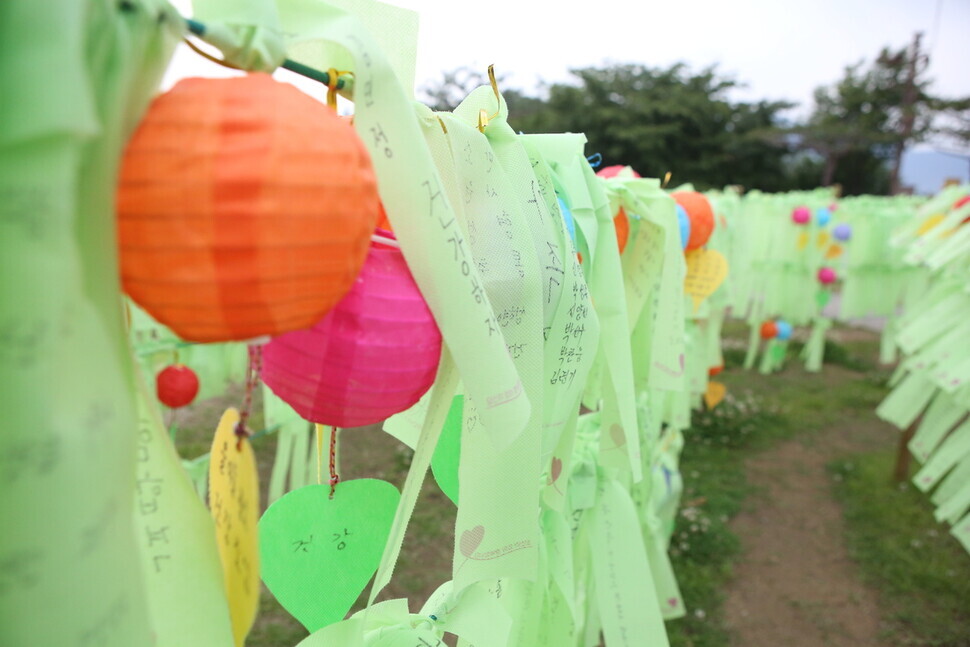
The temple also houses a large number of cultural artifacts. There’s the Dry-Lacquered Seated Avalokitesvara Bodhisattva (Treasure No. 1,362), the Seven-Story Stone Pagoda (Treasure No. 499), and Hongryeon Hermitage (Gangwon Province Cultural Record No. 36).
According to legend, Hongryeon Hermitage was built by the monk Uisang after he followed a blue bird into a cave and then, while praying, had a vision of the bodhisattva Guanyin above a lotus flower on a rock. That inspired the theme of the temple stay here — “follow the blue bird,” symbolizing our dreams and hopes.
“Each year, between 4,000 and 5,000 people take part in our temple stay. Most of our visitors are young people in their 20s and 30s,” Lee Hye-won tells me.
While Yangyang is best known as a mecca for surfers, it’s now gaining attention among young people as a relaxing vacation destination.

As the name suggests, a relaxation-oriented temple stay gives participants time to truly be alone. The three Buddhist services each day are optional. The only itinerary is meal times and lights out at 9 pm.
There are plenty of places around Naksan to zone out. There’s a large wooden platform in front of the dormitory that’s perfect for gazing out upon the woods. It would also be a good spot for stretching out and getting some sun on a nice day.
For views of the ocean, I recommend the Uisang Pavilion, a well-known sunrise lookout. Take a deep breath while looking out at the sea and hearing the waves crash below you.
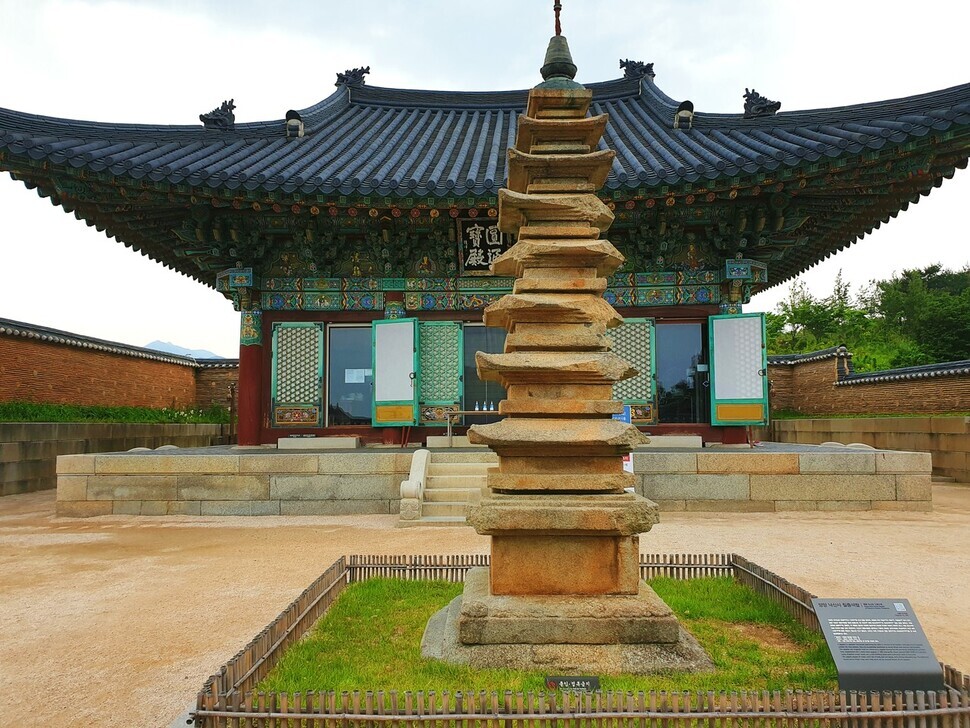
One of the beauties of a temple stay is that you can explore the temple in peace when there aren’t any other tourists around. Early in the morning and the evening hours are nice times for a quiet stroll through the temple grounds.
In fact, the early morning is the best time to take in the temple’s tranquility. At 4 am on June 2, my second day at the temple, I head to Hongryeon Hermitage, where the early morning service is taking place. As I walk along the deserted path, all I can hear is the waves crashing on the rocks.
Only two people are performing the early morning service at the hermitage. The chanting of the monks, the clacking of the wooden bell, and the murmur of the waves echo through the stillness and darkness of the early morning, bringing relief from the troubles of my life.

Around 5 am, following the service, the red sun slowly rises from the ocean. The sunlight drives away the darkness and reveals the ocean sights, little by little. I get a clearer view of the waves and the boats on the sea.
A handful of people have gathered to watch the sunrise. They make their wishes as they bask in the brightness of the sun, which heralds the beginning of a new day.
Shortly after noon, billows of fog blow in from the ocean and descend upon the temple, shrouding its buildings. The sight amazes visitors to the temple, who marvel at the wonders of the place.
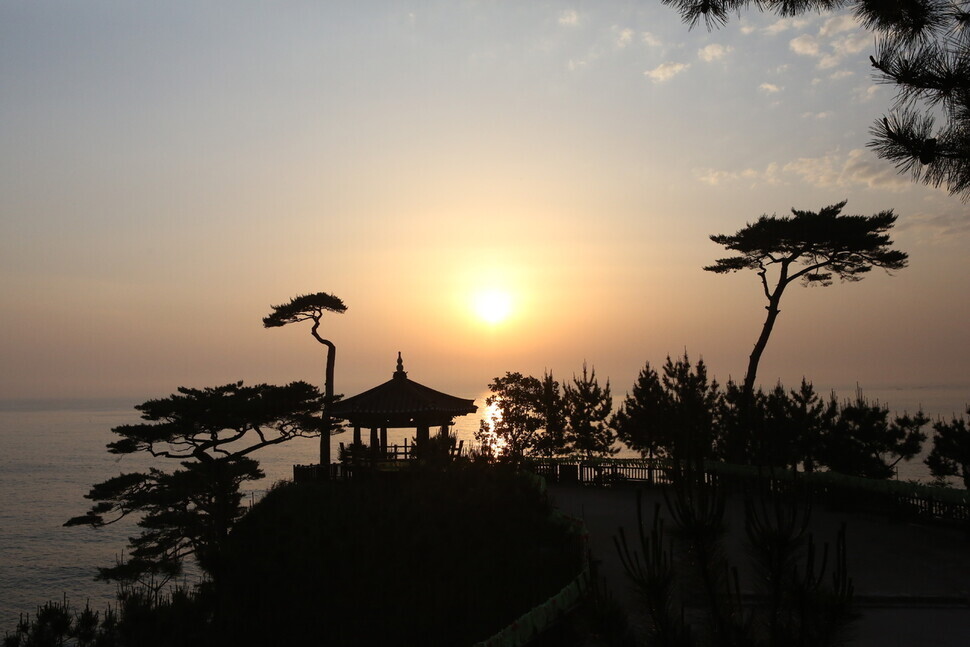
The fog transforms the scenery at the temple into something different from the day before. Wreathed in fog, the halls, pagoda, and ocean have an air of mystery.
I walk slowly through the grounds of the temple. I’d briefly visited once about ten years ago, but it feels different now.
Boom, boom, boom. The temple drum resounds, letting us know that the evening service is about to begin.
The heavy drumbeat echoes in my heart, as darkness falls on the mountain temple.
By Her Yun-hee, staff reporter
Please direct comments or questions to [english@hani.co.kr]

Editorial・opinion
![[Editorial] Penalties for airing allegations against Korea’s first lady endanger free press [Editorial] Penalties for airing allegations against Korea’s first lady endanger free press](https://flexible.img.hani.co.kr/flexible/normal/500/300/imgdb/original/2024/0502/1817146398095106.jpg) [Editorial] Penalties for airing allegations against Korea’s first lady endanger free press
[Editorial] Penalties for airing allegations against Korea’s first lady endanger free press![[Editorial] Yoon must halt procurement of SM-3 interceptor missiles [Editorial] Yoon must halt procurement of SM-3 interceptor missiles](https://flexible.img.hani.co.kr/flexible/normal/500/300/imgdb/child/2024/0501/17145495551605_1717145495195344.jpg) [Editorial] Yoon must halt procurement of SM-3 interceptor missiles
[Editorial] Yoon must halt procurement of SM-3 interceptor missiles- [Guest essay] Maybe Korea’s rapid population decline is an opportunity, not a crisis
- [Column] Can Yoon steer diplomacy with Russia, China back on track?
- [Column] Season 2 of special prosecutor probe may be coming to Korea soon
- [Column] Park Geun-hye déjà vu in Yoon Suk-yeol
- [Editorial] New weight of N. Korea’s nuclear threats makes dialogue all the more urgent
- [Guest essay] The real reason Korea’s new right wants to dub Rhee a founding father
- [Column] ‘Choson’: Is it time we start referring to N. Korea in its own terms?
- [Editorial] Japan’s rewriting of history with Korea has gone too far
Most viewed articles
- 1[Editorial] Japan’s rewriting of history with Korea has gone too far
- 260% of young Koreans see no need to have kids after marriage
- 3Presidential office warns of veto in response to opposition passing special counsel probe act
- 4Vietnamese war victims speak of sexual violence by S. Korean troops for the first time
- 5Hybe-Ador dispute shines light on pervasive issues behind K-pop’s tidy facade
- 6For survivor, Jeju April 3 massacre is a living reality, not dead history
- 7[Column] Park Geun-hye déjà vu in Yoon Suk-yeol
- 8[Editorial] Penalties for airing allegations against Korea’s first lady endanger free press
- 9[Special Feature Series: April 3 Jeju Uprising, Part III] US culpability for the bloodshed on Jeju I
- 10[Column] America must frankly own up to role in tragic Jeju April 3 Incident